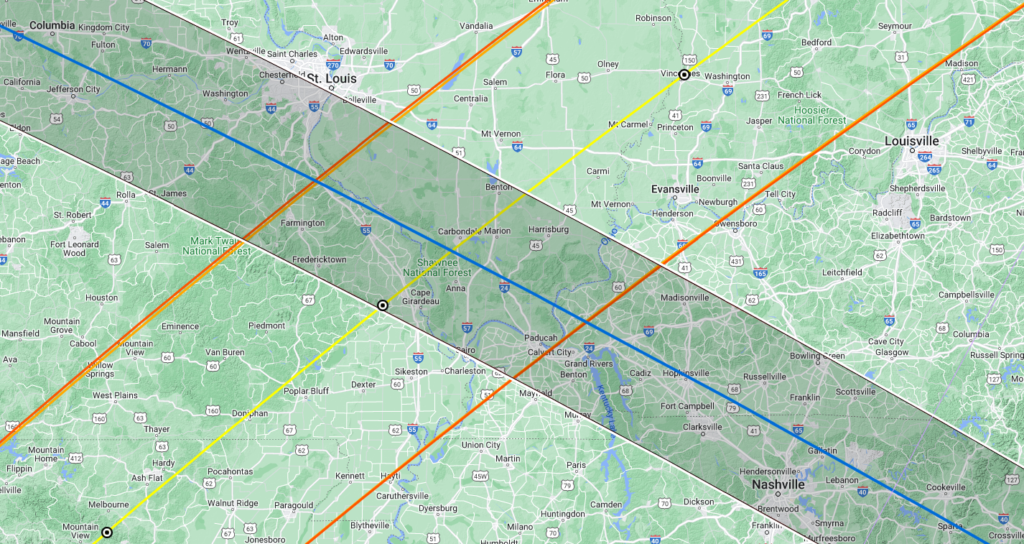
The average time span between totalities from a given place is ca. 375 year, with a minimum just under 6 months and the longest and maximum of ca. 4 millennia (or thereabouts).
April 8, 2024, America is preparing for yet another exhilarating phenomenon – a grand spectacle of total solar eclipse, seven years after the memorable 2017 event. Remarkably, the paths of these two shadows, around 150 km wide, will cross in an area encompassing Missouri, Illinois, and Kentucky, making these locations the epicenter of two major eclipses within a decade.
But how frequent are total solar eclipses and what influences their occurrence?
On average, earth experiences a total solar eclipse every 375 years. However, annually, we witness an average of 2.38 solar eclipses of various kinds. While there are at least two each year, the number of eclipses can reach up to five, with more than 72 percent of years having just two eclipses, and only 0.5 percent experiencing five. Moreover, a total solar eclipse occurs approximately once every 18 months.
Astoundingly, the frequency of these celestial events is latitude dependent, as explained by the well-known Belgian astronomer Jean Meeus https://adsabs.harvard.edu/
However, it is crucial to note that these findings are statistical and carry a significant degree of variability. The interval between total eclipses at any given location is unpredictable and remarkably varied.
A curious fact depicted by Meeus pushes this timeline to extreme points. According to his study as presented in ‘Shadow painting the globe’, published by Sky and Telescope vol 98 n 2 (1999), the longest interval for a location to observe a total eclipse can stretch to an incredible 4000 years. Contrarily, the shortest interval can fold to just about six months!
The shortest interval between “pure” total eclipses is 12 lunations, just under a year. If their paths intersect, there will be places seeing totality in just under a year. But this interval can be reduced to 6 lunations, or just under 6 months. Annular-total eclipse can occur 6 lunations apart or one annular-total eclipse and a “pure” total eclipse can occurr 6 lunations apart. If the totality sections of the eclipse path interact, there are places seeing totality in just under six months!
A short chapter in Jean Meeus’ Mathematical Astronomy Morsels vol 3 talks about this.
